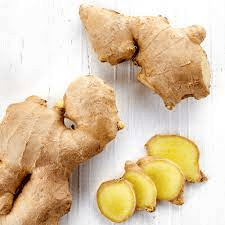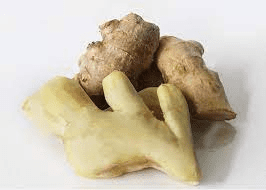Ginger skin, the thin outer layer of the ginger rhizome (Zingiber officinale), often goes unnoticed but holds its own significance in both culinary and medicinal contexts. This delicate, papery layer encases the aromatic and flavorful flesh of the ginger, providing a first line of defense against environmental factors and pests. Understanding the characteristics and potential uses of ginger skin can add another dimension to the appreciation and utilization of this versatile root.
The appearance of ginger skin varies depending on the maturity of the rhizome. In young ginger, the skin is thin, smooth, and almost translucent, while in mature ginger, it becomes thicker, more fibrous, and darker in color, ranging from light tan to brown. The skin’s texture can also vary from smooth to slightly rough or wrinkled, depending on how the ginger was grown and stored.
Culinary practices often involve peeling ginger to reveal the more tender flesh underneath. However, ginger skin is entirely edible and contains many of the same bioactive compounds as the flesh, including gingerols and shogaols. These compounds contribute to ginger’s distinctive flavor and its health benefits, such as anti-inflammatory and antioxidant properties. By using the skin, cooks can maximize the use of the ginger rhizome and reduce waste.
In some culinary traditions, especially in Asian cuisine, ginger is used with its skin intact. The skin adds a slightly different texture and can contribute to the overall flavor profile of a dish. When making broths, teas, or infusions, ginger skin can be left on, providing a subtle, earthy note. For dishes that require a more refined texture, such as ginger pastes or finely grated ginger, peeling might still be preferred. However, for stir-fries, stews, and marinades, leaving the skin on can enhance the complexity of flavors.
Moreover, ginger skin can be utilized in various culinary innovations. For instance, it can be dried and ground into a powder to be used as a spice. It can also be candied or pickled, providing a unique twist on traditional ginger preparations. These uses not only offer culinary diversity but also ensure that the entire rhizome is utilized, aligning with sustainable cooking practices.
Medicinally, ginger skin shares the same health-promoting properties as the rest of the ginger rhizome. It can be used in herbal teas and tinctures to help with digestive issues, reduce nausea, and provide anti-inflammatory benefits. Including the skin in medicinal preparations can enhance the potency of these remedies due to the concentration of bioactive compounds in the skin.
When using ginger skin, it is important to ensure that the ginger is thoroughly cleaned to remove any dirt or residues. Organic ginger is preferable if the skin will be used, as it is less likely to contain pesticides or other chemicals. A simple rinse under water, followed by scrubbing with a vegetable brush, is usually sufficient to clean the ginger skin.
Ginger skin is a valuable part of the ginger rhizome, offering both culinary and medicinal benefits. Its rich content of bioactive compounds makes it a potent addition to dishes and natural remedies. While often peeled away, incorporating ginger skin into cooking and health practices can enhance flavors, add nutritional value, and promote sustainable use of the entire ginger root. By recognizing and utilizing the potential of ginger skin, one can fully appreciate the versatility and benefits of this remarkable plant.
The Economic Importance and Uses of Ginger Skin

1. Nutritional Value: Ginger skin contains valuable nutrients and antioxidants, making it beneficial for health when consumed.
2. Culinary Use: Ginger skin can be used to flavor broths, soups, and teas. It provides a subtle ginger taste without the intensity of the root.
3. Food Waste Reduction: Utilizing ginger skin in cooking helps reduce food waste, making use of parts of the ginger root that are often discarded.
4. Herbal Teas: Ginger skin can be dried and used to make herbal teas, which can have digestive and anti-inflammatory benefits.
5. Natural Remedies: In traditional medicine, ginger skin is sometimes used to treat minor ailments like colds and digestive issues.
6. Cosmetic Industry: The antioxidants in ginger skin are used in cosmetics for their anti-aging and skin-soothing properties.
7. Composting: Ginger skin can be composted to enrich soil with organic matter, benefiting agricultural practices.
8. Animal Feed: Ginger skin can be processed and added to animal feed, providing nutritional benefits to livestock.
9. Infused Oils: Ginger skin can be used to make infused oils, which are used in cooking and as massage oils.
10. Craft Brewing: Ginger skin can be used in brewing to add a unique flavor to craft beers and other beverages.
11. Natural Cleaning Products: The antimicrobial properties of ginger skin can be harnessed in making natural cleaning products.
12. Flavoring Agent: Ginger skin can be used as a natural flavoring agent in candies, syrups, and other culinary products.
13. Food Industry: Ginger skin extract can be used as a natural preservative in the food industry due to its antimicrobial properties.
14. Nutraceuticals: Ginger skin is used in the production of nutraceuticals for its health benefits, including digestive and anti-inflammatory properties.
15. Essential Oils: The skin can be processed to extract essential oils used in aromatherapy and skincare products.
16. Fermentation: Ginger skin can be used in fermentation processes to create products like ginger beer and kombucha.
17. Traditional Medicine: In various cultures, ginger skin is used in traditional medicinal preparations for its health benefits.
18. Culinary Innovation: Chefs use ginger skin creatively in recipes to add depth and complexity to dishes.
Read Also: Prevention and Methods of Controlling Coccidiosis Among Chickens
The Products and By-products That Can Be Derived From Ginger Skin

1. Dried Ginger Skin: Ginger skin can be dried and used in teas or as a spice.
2. Ginger Skin Tea: Made by steeping dried or fresh ginger skin in hot water for a mild, flavorful tea.
3. Ginger Skin Extract: Extracted from the skin and used in supplements and cosmetics for its antioxidant properties.
4. Ginger Skin Oil: Infused oil made by steeping ginger skin in a carrier oil, used in cooking and skincare.
5. Ginger Skin Powder: Dried and ground ginger skin used as a seasoning or in supplements.
6. Ginger Skin Capsules: Encapsulated powdered ginger skin used as a dietary supplement.
7. Ginger Skin Vinegar: Made by fermenting ginger skin with vinegar, used in cooking and salads.
8. Ginger Skin Syrup: Made by boiling ginger skin with sugar and water, used as a sweetener and flavoring.
9. Pickled Ginger Skin: Ginger skin pickled in vinegar and spices, used as a condiment.
10. Ginger Skin Broth: Used to flavor broths and soups, adding a subtle ginger taste.
11. Ginger Skin Soap: Soap infused with ginger skin extract for its skin benefits.
12. Ginger Skin Shampoo: Shampoo containing ginger skin extract for its scalp-soothing properties.
13. Fermented Ginger Skin: Used in making fermented products like ginger beer and kombucha.
14. Ginger Skin Wine: An alcoholic beverage made by fermenting ginger skin with sugar and yeast.
15. Ginger Skin Paste: Made by grinding fresh ginger skin into a paste, used in cooking.
16. Ginger Skin Compost: Used to enrich soil in gardens and farms.
17. Ginger Skin Animal Feed: Processed and added to animal feed for its nutritional benefits.
Read Also: Time and Methods of Fertilizer Application on Crops
Frequently Asked Questions (FAQ’s) About Ginger Skin

1. What is ginger skin?
Ginger skin is the outer layer of the ginger root, often peeled off before using the root in cooking.
2. Can ginger skin be eaten?
Yes, ginger skin is edible and contains nutrients and antioxidants. It can be used in cooking and teas.
3. How do you use ginger skin in cooking?
Ginger skin can be used to flavor broths, soups, and teas. It can also be dried and ground into powder.
4. What are the health benefits of ginger skin?
Ginger skin has anti-inflammatory and antioxidant properties, which can aid digestion and boost the immune system.
5. Are there any side effects of consuming ginger skin?
Ginger skin is generally safe to consume, but it should be washed thoroughly to remove any dirt or pesticides.
6. How do you store ginger skin?
Fresh ginger skin can be stored in the refrigerator, while dried ginger skin should be kept in an airtight container in a cool, dry place.
7. Can ginger skin be used in traditional medicine?
Yes, ginger skin is sometimes used in traditional remedies for colds, digestive issues, and inflammation.
8. How do you make ginger skin tea?
Steep fresh or dried ginger skin in hot water for several minutes to make ginger skin tea.
9. Can ginger skin be used in cosmetics?
Yes, ginger skin extract is used in cosmetics for its antioxidant and skin-soothing properties.
10. What products can be made from ginger skin?
Products include dried ginger skin, tea, extract, oil, powder, capsules, vinegar, syrup, pickles, broth, soap, shampoo, fermented products, wine, paste, compost, and animal feed.
Read Also: Measurement and Definition of the term water yield

